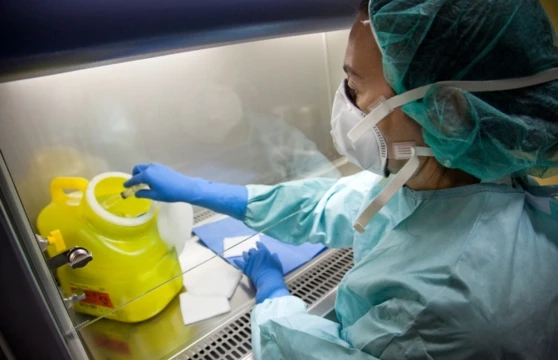In healthcare settings, the safety of employees, patients, and visitors is paramount. Emergencies, whether natural disasters, pandemics, or workplace incidents, can arise at any time, and a comprehensive plan is crucial. But how do healthcare facilities ensure they are fully prepared to handle these unexpected situations? This is where the Occupational Safety and Health Administration (OSHA) comes into play, offering guidelines and resources to ensure that healthcare organizations are prepared for the unexpected.
In this post, we'll explore OSHA's vital role in healthcare emergency preparedness and response plans, focusing on how their regulations can help healthcare facilities maintain safety during crises.
Understanding OSHA's Purpose in Healthcare
The Occupational Safety and Health Administration (OSHA) is a regulatory body under the U.S. Department of Labor that sets and enforces standards to ensure a safe and healthy working environment. In healthcare, where the risks of workplace injuries, infections, and emergencies are prevalent, OSHA's guidance becomes a critical part of ensuring that healthcare providers can effectively manage emergencies. OSHA training for healthcare is not just about addressing physical safety; it also covers worker health, including psychological well-being, which is particularly important during high-stress emergencies.
Have you ever wondered what specific regulations OSHA has implemented to protect healthcare workers during emergencies?
Key OSHA Regulations Impacting Healthcare Emergency Plans
In the healthcare industry, OSHA provides numerous standards that guide emergency preparedness and response. Some of these regulations are directly focused on the safety of healthcare workers, while others extend to ensuring that the facility is equipped to manage a broad range of emergencies.
Personal Protective Equipment (PPE) Requirements - One of the most critical components of emergency preparedness in healthcare is the proper use of Personal Protective Equipment (PPE). OSHA outlines specific requirements for PPE, ensuring that healthcare workers are adequately protected during emergencies, such as exposure to infectious diseases, hazardous chemicals, or physical trauma.
Healthcare facilities must identify potential hazards and provide appropriate PPE for each situation, from gloves and masks to face shields and gowns. OSHA's guidelines help ensure that healthcare workers are not exposed to unnecessary risks, especially in high-stakes emergencies like pandemics or hazardous spills.
Bloodborne Pathogens Standard- In healthcare environments, there's an ever-present risk of exposure to bloodborne pathogens, especially during emergencies like surgeries or trauma care. OSHA's Bloodborne Pathogens Standard mandates that healthcare employers implement an effective exposure control plan, which includes providing appropriate PPE, training staff, and offering vaccines such as the hepatitis B vaccine. This regulation ensures that healthcare workers are adequately prepared and protected from infectious diseases from direct contact with bodily fluids during an emergency response.
Emergency Action Plans (EAP)- OSHA's Emergency Action Plan Standard (29 CFR 1910.38) requires healthcare facilities to develop comprehensive emergency action plans that address potential emergencies, from fires and natural disasters to active shooter incidents. These plans must be tailored to each facility's specific risks, including evacuation procedures, emergency medical care, and communication systems to ensure that everyone—staff, patients, and visitors—knows what to do during an emergency. OSHA emphasizes that EAPs must be regularly updated, practiced, and accessible to all staff members.
OSHA and Employee Training
In addition to regulatory standards, OSHA places a significant emphasis on employee training. For healthcare workers, it is not enough to have emergency protocols in place—employees must also be adequately trained to respond to emergencies. OSHA's guidelines ensure that healthcare workers are trained in everything from PPE use and bloodborne pathogens to emergency evacuation and fire safety. Regular training, drills, and exercises are key to making sure everyone knows their role and responsibilities during an emergency.
What type of training do you think is most essential for healthcare workers when preparing for an emergency situation?
Training also extends to mental health support. During and after an emergency, healthcare workers can experience stress, burnout, and trauma. OSHA recognizes the importance of supporting the psychological well-being of workers and recommends that healthcare organizations provide training on stress management, coping strategies, and mental health resources.
Conclusion
In times of crisis, healthcare workers are often on the front lines, ensuring that patients receive the care they need. However, to do so safely, it's vital that healthcare organizations adhere to OSHA regulations, which provide a structured framework for emergency preparedness and response.
By following OSHA's guidelines, healthcare facilities can protect their staff, ensure a swift and organized response to emergencies, and ultimately safeguard the well-being of both workers and patients. With OSHA's regulations in place, healthcare organizations are better equipped to handle any situation, giving both staff and patients the security they need during uncertain times.
Additionally, generative AI tools were utilized in the development of the course content, ensuring comprehensive and up-to-date information for your learning experience.
To know more about the OSHA online training visit the website now!


